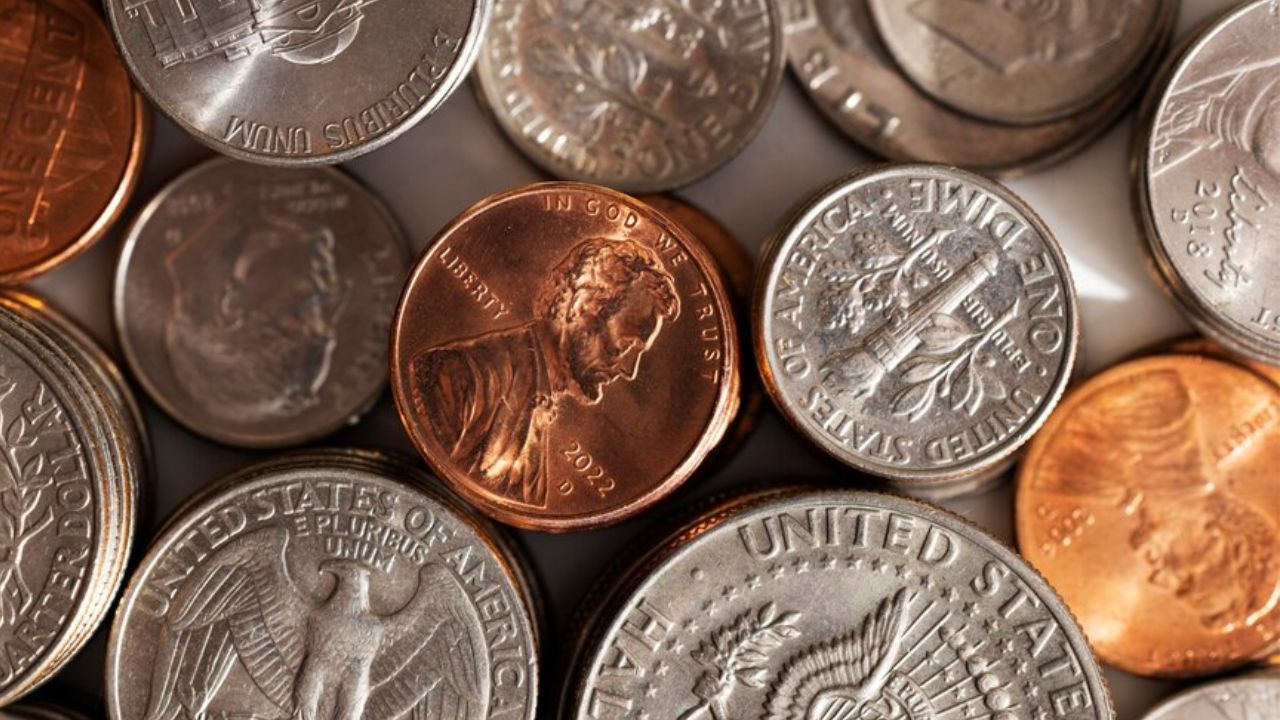Numismatics, the study and collection of currency, often unveils fascinating anomalies that can turn ordinary coins into prized collectibles. One such mystery surrounds the copper 1979 black nickel, an unusual variation of the U.S. nickel that has intrigued collectors for decades. This article delves into the history, uniqueness, and potential value of the 1979 copper-black nickel coin, discussing what makes it so alluring for enthusiasts and investors alike. Whether you’re a seasoned numismatist or just curious about rare coins, this coin’s story provides a captivating glimpse into the world of valuable currency.
Understanding the Copper 1979 Black Nickel
A typical U.S. nickel from 1979 would have been made primarily from a blend of copper and nickel. However, some coins exhibit a distinct, almost blackened appearance, leading to the term “black nickel.” The term “copper 1979 black nickel” specifically refers to nickels from that year which appear darker or blackish in color and are suspected to have a higher copper content or unique oxidation patterns. This deviation has led collectors to speculate about its origins and to value it as a rare find.
Why is the Copper 1979 Black Nickel Unique?
The uniqueness of the copper 1979 black nickel stems from its unusual coloration and potential composition anomaly. Regular 1979 nickels were produced with a composition of 75% copper and 25% nickel. If a 1979 nickel shows a stronger copper hue or a blackened finish, it suggests either an error in the minting process or a natural patina from environmental exposure. Some of these coins may also be altered or artificially toned, but those with natural blackening or high copper content can hold considerable value.
History of the 1979 Nickel Production
The 1979 nickel, like most U.S. nickels of the time, was minted with precise standards in mind. During the 1970s, the U.S. Mint used advanced procedures to produce coins, which were consistent in design and composition. However, rare production flaws or unique minting conditions could occasionally yield coins with unusual characteristics. For example, contaminants in the metal alloy or variations in temperature during minting might account for unusual colors and tones in coins.
The Mystery of Blackened Nickels and Natural Patinas
The dark color of some 1979 nickels is often due to oxidation or tarnish, which occurs when the copper content reacts with air or moisture over time. This process can create a patina that appears dark or black. For collectors, the origin of the black coloration is significant: natural patinas are often more valuable than artificially blackened coins.
How to Identify a Genuine Copper 1979 Black Nickel
Identifying an authentic copper 1979 black nickel can be challenging. Here are some tips to help differentiate genuine blackened coins from artificially toned ones:
- Observe the Patina: Natural blackening usually appears more uniform and subtle compared to artificial treatments.
- Check for Oxidation Patterns: Genuine oxidation often produces slight color variations across the coin’s surface.
- Seek Professional Grading: Submitting the coin to a recognized grading service like the Professional Coin Grading Service (PCGS) can help verify its authenticity.
Why Some 1979 Nickels are More Valuable
Beyond the intrigue of the color, the 1979 black nickel may also carry a premium due to its scarcity. When rare errors or unique toning are discovered on widely circulated coins, their value often rises among collectors. Such coins represent the unexpected; they are “mint oddities” that weren’t intended to exist, making them prized possessions in collections. Furthermore, the historical context of 1979 adds another layer of interest, as that year falls within an era where coins of unique compositions were rare.
Copper Composition and Its Effect on Value
The term “copper 1979 black nickel” implies a higher-than-usual copper content, though there’s no official record of a purely copper nickel from that year. However, any potential shift in the copper-to-nickel ratio can impact both the coin’s appearance and value. Coins with noticeable copper characteristics are often mistaken for unique mint varieties, which can lead to intense speculation about their worth.
Estimated Value of a Copper 1979 Black Nickel
The value of a copper 1979 black nickel varies depending on several factors, including its condition, the extent of its blackened patina, and whether it’s a genuine mint error. Here’s an approximate range:
- Common Circulated Coins: $0.05 to $1.
- Coins with Unique Patinas: $2 to $10, depending on the darkness and appeal of the patina.
- Genuine Mint Errors: Up to $50 or more, if verified by a grading service.
Factors That Influence the Value of the Copper 1979 Black Nickel
Numerous factors influence the value of these coins. Here’s a breakdown of what collectors look for:
- Rarity and Uniqueness: Coins with unique characteristics, especially verified mint errors, are more valuable.
- Condition and Grade: Uncirculated or high-grade coins command higher prices than worn ones.
- Demand Among Collectors: Trends in the numismatic community can drive interest and increase prices.
Grading and Appraisal of Rare Nickels
For anyone considering the sale or purchase of a copper 1979 black nickel, grading by an authorized organization like the PCGS or the Numismatic Guaranty Corporation (NGC) is advisable. These organizations assess a coin’s condition and authenticity, which significantly impacts its market value. Coins with unusual attributes, such as a blackened patina, often benefit from formal grading to confirm their unique qualities.
Tips for Collecting Rare U.S. Nickels
If you’re interested in collecting rare U.S. nickels, especially those with unique characteristics like the copper 1979 black nickel, here are a few tips:
- Research Market Trends: Stay informed about current values and trends within the numismatic market.
- Use Reliable Sources for Information: Coin guides and collector communities offer valuable insights.
- Handle Coins with Care: Avoid cleaning or altering the patina, as this can reduce value.
- Seek Professional Advice: Consult a reputable numismatist or appraiser for high-value coins.
The Appeal of Mint Error Coins in Numismatics
Mint error coins hold a special place in numismatic circles because they are tangible evidence of the minting process’s unpredictability. When errors occur—be it in composition, strike, or finish—they produce coins that are different from the norm, which adds a layer of fascination for collectors. This is one such example where an unintended characteristic elevates its desirability.
Copper 1979 Black Nickel in Popular Culture and Media
The allure of rare coins has even made its way into popular culture, where stories of individuals finding valuable coins in pocket change often circulate as feel-good stories. These tales feed the imagination, prompting treasure hunters and coin enthusiasts to search for their own piece of financial history with its mysterious hue and potential value, is no exception.
FAQs
What is a copper 1979 black nickel?
The copper 1979 black nickel is a U.S. nickel from 1979 that appears to have a higher copper content or has developed a darkened patina. Its unusual appearance has made it a subject of interest among collectors.
Is the copper 1979 black nickel valuable?
Yes, depending on its condition, rarity, and authentication, a with unique characteristics can be valuable to collectors, especially if it’s a confirmed mint error.
How can I tell if my 1979 nickel is a rare black nickel?
To determine if your 1979 nickel is rare, examine its coloration and patina. Seek grading from a professional service to confirm its authenticity and unique qualities.
Can a nickel be made entirely of copper?
Typically, nickels are a blend of However, coins with a higher copper content or unusual toning might exhibit more copper-like characteristics.
Where can I sell a copper 1979 black nickel?
Rare coins can be sold through auction houses, coin dealers, or online marketplaces. For higher-value coins, professional appraisal and certification are recommended.
Why does my 1979 nickel look black?
The blackened appearance of some 1979 nickels is likely due to natural oxidation or tarnish, which can create a dark patina on the coin’s surface.
Conclusion
The copper 1979 black nickel remains an intriguing piece in the numismatic world, capturing the attention of collectors and enthusiasts alike. Its unique coloration and potential mint anomalies make it a fascinating example of how even everyday objects can become valuable treasures. Whether you’re a casual collector or a serious investor, understanding the factors that contribute to the value of these rare coins can enhance your appreciation of their beauty and history. As more collectors discover the allure of its place in the world of rare coins seems assured.











